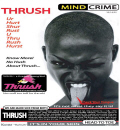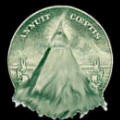Enter Bruce Kane, a researcher at the Laboratory for Physical Science at the University of Maryland. "My dream is combining silicon and NMR," says Kane. In a 1998 Nature article, he proposed using the seeds of the old-guard technology to grow a new breed of quantum-powered device. But aside from sharing the same sandy origin, a silicon-based QC would barely resemble its ancestor - the heart of the new machine would be radically different.
Kane's proposal, unlike NMR, has no foreseeable size limits. It picks up where NMR leaves off, using nuclear spins as its qubits - but in an environment where each individual atom's spin can be isolated and addressed. Unlike NMR, which deals with signals from many trillions of identical molecules running the same computation, Kane's silicon-based quantum computer would involve a single lattice of atoms, whose computational dance has been choreographed down to the last nucleus and electron.
Kane calls for doping a silicon crystal with phosphorus atoms, much the way it's done today for conventional microchips. But because of the extremely delicate nature of quantum computations, the phosphorus would need to be laid into the silicon grid in perfect accordance with the circuit pattern, while the silicon itself would need to be 100 percent pure. To reach that goal almost certainly requires nanofabrication technologies that don't yet exist.
The innards of a Kane QC would look much like a conventional computer - except that to cut out extraneous noise from the vibration of molecules, it would be cooled to a fraction of a degree above absolute zero, adding a few hundred thousand dollars' worth of refrigeration equipment to the parts list. Yet if this grid architecture could be mastered to build a 20- or 100-qubit machine, the same techniques could be applied to piece together the megaqubit QCs everyone now fantasizes about.
Building a silicon quantum computer could take years of research in tricky nanomanipulation. But it may not be necessary: Electrons floating on superfluid helium could end-run current hardware altogether.
"The ideal property of a quantum bit is, you would be able to set it to some prescribed state," Kane says. "And it would survive a very long amount of time, so you can actually do logical operations on it. A fundamental problem we're dealing with is quantum decoherence. This means that quantum information doesn't have the permanent characteristic you would like. It tends to decay very rapidly. So you want to find quantum states in nature with properties that, in principle, could last a long time."
Jonathan Jones,
an NMR researcher at Oxford University's Centre
for Quantum Computation, is guardedly
optimistic. "The nice thing about the Kane
proposal is that it doesn't actually break any
laws of physics - that's always a good sign," he
says. "The problem with it is we can't even do
the experiments yet to test whether it would
work." But Kane thinks he'll know within a
decade: "We have this 10-year period when we're
just going to be developing the tools. After
that, something might happen very rapidly."
This summer, a group of researchers including Kane published a paper announcing a breakthrough in nanofabrication - the positioning of single phosphorus atoms on a silicon surface - that could increase the odds their proposed QC would indeed be operational by 2015.
The trickiest aspect of building a silicon QC is the intricate level of nanomanipulation that must be mastered to address and finesse hundreds of individual quantum states at a time. It's an engineering project that could drive nanotech research for years and still fail.
But it may not be necessary. Phil Platzman, a senior researcher at Lucent Bell Labs for more than three decades who recently accepted a physics post at UC San Diego, has been studying an approach that end-runs current hardware altogether. "We believe, based on realistic estimates, there's already a good candidate for a quantum computer that has an easily manipulated set of qubits with extremely long coherence times," he wrote two years ago in a paper coauthored with Mark Dykman of Michigan State University. "This is a system of electrons floating on the surface of superfluid helium at very low temperatures," so low that the friction between the liquid helium's atoms disappears.
Electrons-on-helium, as it's called for short, has some of the friendliest properties nature can provide. "It's the cleanest, most well-defined system known to anybody," says Platzman. "Nothing else even comes close."
The qubits here are the electrons, as they float in vacuo, suspended by a springlike attraction they develop with the surface of the liquid helium. The electron, in its lowest energy state, represents 0, while the atomic particle's first excited state is 1. Impurities are nonexistent: The entire system is cooled down to 0.01 degrees Kelvin, where helium is the only substance that remains a liquid. Any stray impurities condense into solid form and fall to the bottom of the tank - just so much sediment - while the computing action happens on the liquid-helium surface.
"It's a weird system," says Platzman. "The electrons are really in a vacuum - better than any other you can conceive of." So the purity and manipulability of each qubit is about as close to ideal as one could expect. And because the electrons are so mobile, they can be separated by relatively great distances - circuitry could be assembled with today's microfabrication techniques, rather than waiting for nanotech.
John Goodkind, at UC San Diego, has been implementing Platzman and Dykman's ideas in the lab. He says that the present method he's using could produce arrays as large as our hypothetical 333-qubit array. "However," he adds, "we do not yet have sufficient theoretical understanding of the interactions between many qubits to predict their influence on the states of the individual bits." Yet those interactions could be one of the great untapped strengths of the system (see "Dawn of the QCAD Age").
Best of all, Platzman doesn't think it'll take a decade to get his helium QC running for real. "In two years, I think we can put together these bits and pieces," he says. "We'll be able to do some significant numbers of quantum manipulations - we'll control them and read them out." And it won't require huge leaps in nanotech that may not happen soon. "Silicon is very, very good at current chip sizes," he says. "But on the scale we're talking about, we would need to know where every atom is. Bruce Kane is proposing pushing silicon to many orders of magnitude beyond where it is now. However, with electrons-on-helium, everything we know about it right now should enable us to build a working computer."
If anything, Platzman is afraid his electrons-on-helium QC will be seen as too exotic. "Many of the scalable systems have some connection with the real semiconductor business - gallium arsenide or silicon or germanium," he says. "People want to use silicon, silicon, silicon - even if something else is a little bit better. A huge amount of the money is going into semiconductor-related projects."
And with good reason: Shrinking microchip components are fast approaching the point where quantum forces will affect them. Why not make a virtue of it? The end of Moore's law is the beginning of the quantum era.



.jpg)

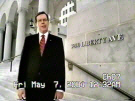

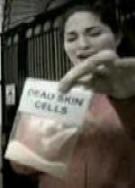





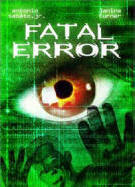
.jpg)








